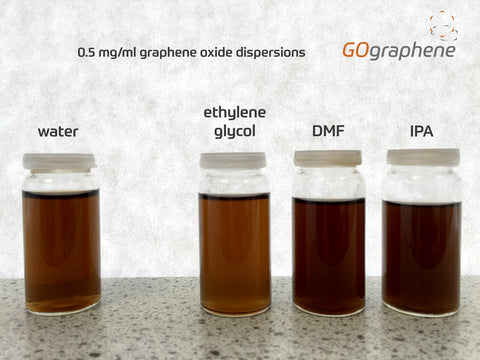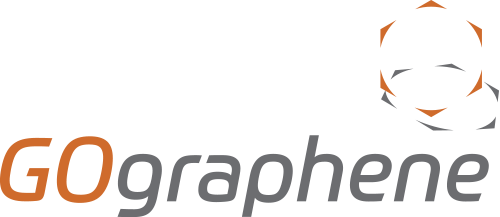FAQs
GOgraphene Graphene Oxide Overview, Facts & Information
What is graphene oxide?
Graphene oxide is a two dimensional material based on graphene. The general formula of graphene oxide is given by CxHyOz. Graphene oxide’s structure is based on a single sheet of carbon atoms bonded in a honeycomb framework. Carbon atoms across the surface of each side of the carbon sheet are bound to a variety of oxygen groups such as epoxy, alcohol and carboxylic acid groups.
How is graphene oxide different to graphene?
Graphene oxide is a derivative of graphene. They are both two dimensional materials with a honeycomb framework of carbon atoms. The differences between the two materials derive from the oxygen groups which decorate the surface of graphene oxide but are not observed on graphene. The presence of these oxygen groups results in different properties for graphene oxide when compared to graphene. For example, the oxygen groups on graphene oxide allow it to disperse well in many polar solvents, act as an electrical insulator and as a thermal insulator.
When would I use graphene oxide instead of graphene?
The oxygen groups on graphene oxide mean that it can disperse in polar solvents far better than graphene. This allows researchers to gain a good dispersion which may not be possible when using graphene. Since graphene oxide can be used as a precursor to graphene, depending on the system the researcher may then be able to reduce the graphene oxide and achieve a good dispersion of graphene. Graphene oxide can be reduced to graphene by either chemical or thermal treatment.
Other instances where graphene oxide would be more appropriate than graphene are in any applications where thermal or electrical conductivity are not desirable.
What materials will graphene oxide disperse in?
Graphene oxide is reported to disperse in many polar solvents. The GOgraphene team have successfully dispersed their freeze dried graphene oxide powder in water, IPA, DMF and ethylene glycol at 0.5 mg/mL. Sonication was supplied via an ultrasonic bath for 3 hours for all 4 vials.

GOgraphene sells graphene oxide as powders and aqueous dispersions – is one better than the other?
GOgraphene offers both graphene oxide powders and dispersions because different research will require one over the other. For aqueous based work, it is likely that the researcher will prefer to buy an aqueous dispersion as this prevents dispersing it themselves and allows them to purchase graphene oxide at a lower price. For anyone working in non-aqueous systems, the powder is generally considered more favourable as it prevents the researcher from drying the material themselves. Another reason for purchasing powder over an aqueous dispersion is the quantity of graphene oxide needed vs. the volume of the reaction – while GOgraphene’s aqueous dispersions are highly concentrated at 10 mg/mL, if the work needs a high mass of graphene oxide but works on a small volume it may be impractical to use the dispersion, meaning the powder is preferred. To summarise, one is not better than the other, the use of each is simply dependant on the research in question.
I am looking to purchase significantly greater quantities than are offered on the GOgraphene website, is this possible?
Yes – GOgraphene is the online webshop for research quantities of graphene oxide manufactured by William Blythe Ltd. If you are interested in purchasing significantly larger volumes than those listed on the GOgraphene website please get in touch via the enquiry form and we will put you in touch with your local William Blythe Business Manager.
